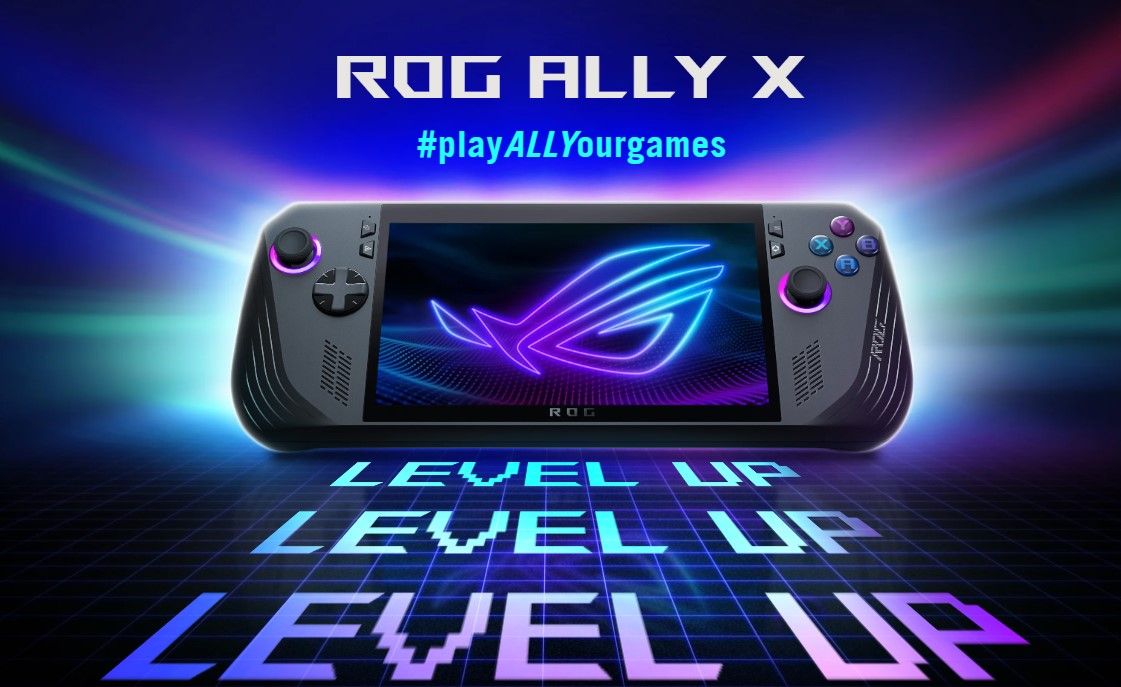
MSI and Asus are stepping up their monitor game. Both companies are now offering burn-in protection as part of the warranties on their OLED displays, which is a welcome layer of security considering how many displays both brands have launching this year.
Although we’ve had OLED gaming monitors for close to two years, most brands have paid very little attention to the risk of burn-in. In January, we took a look at the burn-in protection that the largest brands offered on their OLED monitors and found only three of the eight we looked at explicitly mentioned burn-in protection. MSI and Asus jumping on board brings that number to five, joining the ranks of Alienware, Corsair, and LG.
MSI took to its newsroom to announce a three-year warranty on its upcoming OLED displays (spotted by VideoCardz). MSI’s warranty says that the MSI OLED Care function must always be on in order to make a warranty claim, but it’s enabled by default. Here are the models the warranty covers:
- MAG 271QPX QD-OLED
- MAG 321UPX QD-OLED
- MAG 341CQP QD-OLED
- MPG 271QRX QD-OLED
- MPG 321URX QD-OLED
- MPG 491CQP QD-OLED
- MEG 342C QD-OLED
TFTCentral spotted on X (formerly Twitter) that Asus recently updated its product pages to note a two-year warranty on its OLED displays that covers burn-in.
Asus have updated their warranty for all their OLED monitors (inc the latest PG34WCDM and PG32UCDM models) to now include a 2-year burn in cover. It's listed in the specs section on each product page, although their main warranty page hasn't been updated yet pic.twitter.com/I0MKMJHnPk
— TFTCentral (@TFTCentral) February 5, 2024
Previously, neither Asus nor MSI mentioned burn-in as part of the warranty, leaving open the question of if it was covered. In addition, MSI previously only offered a one-year warranty. The extended time means MSI, at least, now matches Corsair and Alienware with warranty coverage on its OLED displays.
Here’s an updated look at the major brands selling OLED monitors and their warranty coverage:
| Warranty period | Burn-in covered? | |
| LG | Two years | Yes |
| Asus | Two years | Yes |
| Corsair | Three years | Yes |
| Samsung | One year | Unknown |
| Gigabyte | One year | No |
| Acer | Three years | Unknown |
| MSI | Three Year | Yes |
| Alienware | Three years | Yes |
As OLED gaming monitors become more prominent among the best gaming monitors, burn-in protection is important. Burn-in happens when the organic materials of OLED start to degrade at different rates. Static elements — think a banner for a news channel — will degrade faster than images that are constantly moving, leading to a ghostly defect that looks like the static element has burned into the screen.
It’s a point of contention for OLED adoption on desktops, even if the practical risk of OLED burn-in isn’t as big as it may seem. Still, additional warranty coverage is a good thing. Burn-in isn’t something you should encounter during the life of an OLED gaming monitor with proper maintenance, but it’s still nice having peace of mind.
Editors’ Recommendations
- I hate low-profile keyboards, but Asus’ latest has converted me
- There’s a war brewing over OLED gaming monitors
- I’m a monitor reviewer, and these are the upcoming displays I’m most excited about
- Anything is possible in this new era of gaming monitors
- LG’s new OLED monitor does 4K — and so much more

Jacob Roach is a writer covering computing and gaming at Digital Trends. After realizing Crysis wouldn’t run on a laptop, he…
The best monitors we saw at CES 2024

It was all about monitors at CES 2024, and we had a chance to see a lot of them. Samsung has exciting new gaming displays, Asus is pushing refresh rates to places they’ve never gone, and Acer is experimenting with some exciting glasses-free 3D tech. And that’s just the products I could fit in a three-item list.
Yes, we saw some exciting monitors at CES this year. Here are the best monitors we had a chance to lay our eyes on.
LG dual refresh rate OLED
This OLED portable monitor can fold right in half

Laptops with foldable screens have been around for years, but a portable monitor might end up being a more approachable use of the technology. At CES 2024, Asus announced the ZenScreen Fold, a 17.3-inch OLED monitor that can fold up into exactly half that size.
It looks very similar to the ZenBook Fold 17 launched in 2022, but a little slimmed down in thickness and sporting a silver aluminum chassis. It’s 0.38 inches thick when unfolded (and 0.76 inches when folded) and weighs 2.65 pounds. In a sense, it’ll feel like carrying around a second small laptop with you, but once you sit down and unfold that screen to see its glorious expanse of screen real estate, I’m guessing you won’t mind having lugged it in your bag.
MSI Claw handheld hands-on: it’s more significant than you think

MSI is entering the handheld arena, and its debut is more significant than you might think. The MSI Claw doesn’t look dissimilar from the Asus ROG Ally or even the Steam Deck OLED, but the specs underneath mark a significant departure for handheld gaming PCs.
I had a chance to try the device at CES 2024, and it’s definitely a contender. Bolstered with a new chipset, a comfortable design, and software designed to tackle the issues with Windows on a handheld, this might be the portable gaming PC to buy this year.
[ For more curated Computing news, check out the main news page here]
The post MSI and Asus flipped the script on their OLED monitors | Digital Trends first appeared on www.digitaltrends.com





/cdn.vox-cdn.com/uploads/chorus_asset/file/25546355/intel_13900k_tomwarren__2_.jpg)







